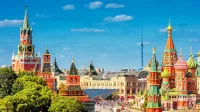Reykjavík is Iceland's capital and largest city, situated on Faxaflói Bay's southern shore in southwestern Iceland. As the world's northernmost capital of a sovereign state (64°08′ N), it is home to approximately 139,000 residents as of 2025. The broader Capital Region encompasses a population of around 249,000.
1904: Home Rule granted
In 1904, Home Rule was granted to Iceland, and the office of Minister for Iceland was established in Reykjavík.
1907: Creation of the city mayor post
In 1907, the post of city mayor was created in Reykjavík.
1908: Post of city mayor advertised
In 1908, the post of city mayor was advertised in Reykjavík, receiving two applications.
1909: Opening of Safnahúsið
Safnahúsið (the Culture House) was opened in 1909 and has a number of important exhibits.
January 1918: Coldest month on record
January 1918 was the coldest month on record in Reykjavík, with a mean temperature of −7.2 °C (19 °F).
December 1918: Iceland becomes a sovereign country
In December 1918, Iceland became a sovereign country known as the Kingdom of Iceland, in personal union with the Crown of Denmark.
1929: Establishment of the Independence Party
In 1929, the Independence Party was established and became the ruling party in Reykjavík.
April 1940: German occupation of Denmark and Norway
In April 1940, Germany occupied Denmark and Norway, leading to the Allied occupation of Reykjavík in May 1940.
May 1940: Allied occupation of Reykjavík
On the morning of May 1940, British warships approached Reykjavík, and the Allied occupation of Reykjavík began without armed resistance following the German occupation of Denmark and Norway in April 1940.
1944: Republic of Iceland founded
In 1944, the Republic of Iceland was founded in Reykjavík. A president, elected by the people, replaced the king, with the office of the president located in Reykjavík.
1955: Halldór Laxness awarded the Nobel Prize for Literature
In 1955, Halldór Laxness was awarded the Nobel Prize for Literature for "vivid epic power which has renewed the great narrative art of Iceland".
1962: Controversy regarding Reykjavík Airport location
Since 1962, there has been some controversy regarding the location of Reykjavík Airport, due to its use of valuable space in central Reykjavík.
1963: Grafarholt golf course opens
In 1963, the Grafarholt golf course opened, which makes it the oldest 18-hole golf course in Iceland.
1972: World Chess Championship in Reykjavík
In 1972, Reykjavík hosted the World Chess Championship between Bobby Fischer and Boris Spassky.
1978: Independence Party loses majority
In 1978, the Independence Party narrowly lost its overall majority in Reykjavík.
1982: Independence Party regains majority
In 1982, the Independence Party regained an overall majority in the Reykjavík City Council.
1986: Reykjavík Summit
In 1986, the Reykjavík Summit between Ronald Reagan and Mikhail Gorbachev took place, highlighting Reykjavík's international importance.
March 1989: Beer ban lifted in Iceland
On March 1, 1989, beer was no longer banned in Iceland and has since become popular.
1994: Reykjavíkurlistinn wins election
In 1994, Reykjavíkurlistinn (the R-list), an alliance of Icelandic socialist parties led by Ingibjörg Sólrún Gísladóttir, won the Reykjavík election.
1997: Korpa golf course opens
In 1997, the Korpa golf course opened.
1998: Immigrant population in Reykjavík
In 1998, immigrants of the first and second generation numbered 3,106 (2.9%) in Reykjavík.
2000: Remodeling of Safnahúsið
In 2000, Safnahúsið was re-modeled to promote the Icelandic national heritage.
2004: Expansion of the European Union
In 2004, several countries, mainly former Eastern Bloc countries, joined the EU, impacting the demographics of foreign residents in Reykjavík.
June 2006: New majority in the City Council
In June 2006, the Independence Party, along with the Progressive Party, formed a new majority in the Reykjavík City Council.
October 2007: New majority on the council
In October 2007, a new majority was formed on the Reykjavík City Council, consisting of members of the Progressive Party, the Social Democratic Alliance, the Left-Greens and the F-list (liberals and independents), following controversy regarding REI.
2007: Summer drought in Reykjavík
During the summer of 2007, Reykjavík experienced a drought, with no rain measured for one month.
2007: Expansion of the European Union
In 2007, several countries, mainly former Eastern Bloc countries, joined the EU, impacting the demographics of foreign residents in Reykjavík.
January 2008: Ólafur F. Magnússon elected mayor
On January 24, 2008, Ólafur F. Magnússon, the leader of the F-list, was elected mayor of Reykjavík.
July 2008: Highest temperature recorded
In July 2008, the highest temperature ever recorded in Reykjavík was 25.7 °C (78 °F).
August 2008: Fourth coalition of the term formed
On August 14, 2008, the fourth coalition of the term was formed in Reykjavík, by the Independence Party and the Social Democratic Alliance, with Hanna Birna Kristjánsdóttir becoming mayor.
2008: Immigrant population in Reykjavík
In 2008, immigrants of the first and second generation numbered 12,352 (10.4%) in Reykjavík.
2008: Economic crash
The economic boom in Reykjavík during the 2000s led to a sharp increase in construction, but many projects came to a halt with the economic crash of 2008.
March 2009: Independence Party due to appoint a new mayor
In March 2009, the Independence Party was due to appoint a new mayor in Reykjavík.
July 2009: Arnamagnæan Manuscript Collection added to UNESCO
On July 31, 2009, the Arnamagnæan Manuscript Collection was added to the UNESCO Memory of the World Register.
May 2010: The Best Party wins seats
In May 2010, The Best Party won six of 15 seats in the Reykjavík City Council election and formed a coalition with the Social Democratic Alliance; comedian Jón Gnarr became mayor.
2011: Reykjavík designated a UNESCO City of Literature
In 2011, Reykjavík city was designated as a UNESCO City of Literature and joined the UNESCO Creatives Cities network.
2013: Expansion of the European Union
In 2013, several countries, mainly former Eastern Bloc countries, joined the EU, impacting the demographics of foreign residents in Reykjavík.
2014: Social Democratic Alliance gains seats
At the 2014 Reykjavík election, the Social Democratic Alliance had its best showing yet, gaining five seats in the council, while Bright Future received two seats and the two parties formed a coalition with the Left-Green movement and the Pirate Party, which won one seat each.
July 2019: Warmest month on record
July 2019 was the warmest month on record in Reykjavík, with a mean temperature of 13.4 °C (56 °F).
2019: Immigrant population in Reykjavík
In 2019, immigrants of the first and second generation numbered 22,311 (17.8%) in Reykjavík.
January 2024: Immigrant population in Reykjavík
On January 1, 2024, immigrants of the first and second generation numbered 33,731 (24.6%) in Reykjavík.
January 2025: Reykjavík Population
On January 1, 2025, Reykjavík had a population of 138,772, comprising 35.6% of Iceland's population, while the Capital Region had a population of 249,054.
2025: Reykjavík population
In 2025, Reykjavík had a population of around 139,000, making it the largest city in Iceland. The Capital Region had a population of approximately 249,000 in 2025.
Mentioned in this timeline
Ukraine is a large country in Eastern Europe second in...

Ronald Reagan the th U S President - was a...
Germany officially the Federal Republic of Germany is a Western...
Russia officially the Russian Federation is a transcontinental country spanning...

Moscow is the capital and largest city of Russia located...
Iceland is a Nordic island country situated between the North...
Trending

6 months ago Aljamain Sterling questions Sean O'Malley's stardom, personality deemed 'a little dry'.
Brent Pry is an American football coach who recently served as the head coach at Virginia Tech from until his...

5 months ago Sarah Sherman's SNL Checks Mistakenly Sent to Gilda Radner's Estate: A Sobbing Revelation

30 days ago Della Maddalena Praised Makhachev, Pimblett Favors Him; Bisping Sees Warm-Up Fight

5 months ago Sundance Film Festival's Final Utah Edition: Egyptian Theatre Excluded, Gratitude Celebrated.
3 days ago Mario and Courtney Lopez celebrate 13 years of marriage with loving tributes.
Popular
Matt and Ross Duffer known as the Duffer Brothers are...
Aftyn Alyssa Behn is an American politician currently serving as...

Candace Owens is an American conservative political commentator and author...

XXXTentacion born Jahseh Dwayne Ricardo Onfroy was a controversial yet...

Ilhan Omar is an American politician currently serving as the...

Lane Kiffin is an American football coach currently serving as...